Winged sons of Russia
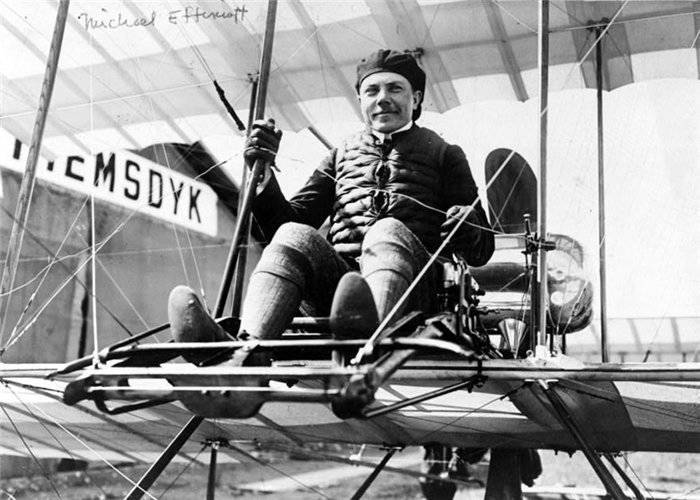
Mikhail Nikiforovich Efimov. The first Russian graduate pilot
In the early twentieth century, the name of the pilot Mikhail Efimov became widely known. The world admired every new achievement of a talented pilot in the sky. And there was something to be surprised about: a young worker, a railroad worker from Russia, three weeks after learning to fly, improved the world record for the duration of the flight with a passenger, set by the American Orville Wright.
And this was only the beginning of the brilliant path of the Russian pilot. In 1909, the Odessa Aero Club (shortly after its creation) acquired a glider. But none of the wealthy members of the club to fly it could not and did not want to risk it. It was then that they remembered about a strong working boy, a constant winner of motorcycle races, who dreamed of the sky.
Mikhail Efimov took off on a glider from the first time, and then made a smooth landing ... The whole city started talking about the daredevil. But soon the glider was removed to the barn. And Efimov was sent to learn to fly an airplane to France to the school of the famous Farman, since there were no flight instructors in Russia yet.
Henri Farman, in the first flying flight, understood and appreciated the richly folded guy, who answered everything with one Russian word: “Good!” Efimov liked the French, and they soon called him a joke “Monsieur Karasho”. Already 7 April 191, Efimov made the first independent mission lasting 45 minutes. Until the end of the month, he performed several dozen more flights.
The name of Mikhail Efimov did not leave the pages of newspapers and magazines: he set world records in speed, range, payload, landing accuracy and flight duration. Russian pilot took prizes at international competitions in Nice, Budapest, Reims, Verona. In March, 1910, for the first time in Russia, he demonstrated public flights at the Odessa hippodrome. And in September M.N. Efimov won the title of the best Russian pilot in the competitions of the All-Russian festival of aeronautics in St. Petersburg.
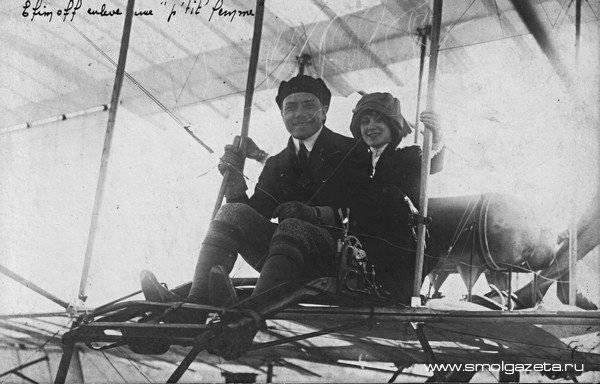
The “King of the Air”, as Mikhail Efimov has now come to be called, is intensely invited to fly to different countries of Europe and America, foreign businessmen offer him a lot of money, but he remains in Russia. And he gives all his talent, all his strength to the training of military pilots in Sevastopol (Kachinsky) aviation school.
In the autumn of 1911, pilots of the Sevastopol school, taking part in the maneuvers of the St. Petersburg and Kiev military districts, demonstrated the combat capabilities of aviation. Mikhail Efimov trained pilots for maneuvers and performed many demonstration flights for the troops himself.
When World War I began, Yefimov became a military pilot. For bold combat missions for reconnaissance and communications, for exceptional courage, not just shown at the front, he was marked with four crosses of St. George and made an officer. In between flights, Mikhail N. Efimov is working on a project for a two-seat armored fighter.
22 July 1916, the commander of the aviation division, where Efimov serves, sends a telegram to the headquarters: "In view of the outstanding abilities of Ensign Efimov to manage high-speed aircraft, I ask him to transfer him to the 4 fighter squadron." The command went to meet, and soon M.N.Efimov was sent a fighter pilot to the Romanian front.
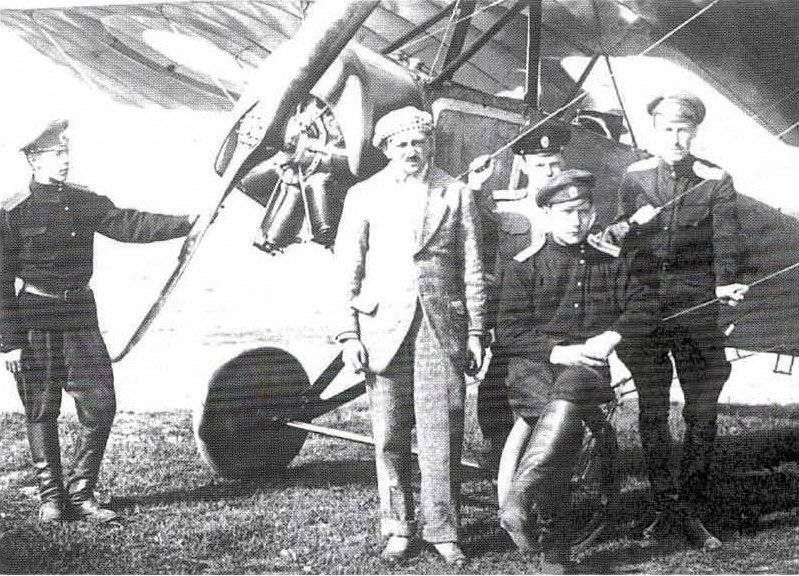
He flew Efimov in the French fighter "Newpore-XI." It was a fast and agile car. However, Newport was strict in handling during landing and takeoff. This aircraft was armed with a machine gun on the upper wing. On such a fighter, Mikhail Efimov made several dozen sorties. So, September 28 1916, Efimov saw that enemy aircraft 6 bombed the port of Constanta. Ensign Efimov joined them in battle. Despite their superiority, the enemy was forced to retreat. The next day, meeting an enemy fighter, Efimov attacked him and, opening fire, fired the entire machine gun shop. It was not possible to bring down, since a lot of time was spent on the inconvenient reloading of the machine gun.
In 1917, the pilot who glorified Russia joined the Bolsheviks. Mikhail Efimov becomes an agitator, he often speaks to pilots and sailors. By decision of the Revolutionary Committee Efimov was appointed flagship pilot of the Black Sea Aviation. In June 1918, when Sevastopol was occupied by the German occupying forces, Efimov was arrested. He was released from prison in April 1919 of the Red Army units that entered Sevastopol.
In June 1919, Denikin’s troops launched an offensive on the Crimea. Efimov retreats from Sevastopol with the political department of the Black Sea fleet and a detachment of sailors. With battles, the Black Sea people break through to Odessa. But here is restless. In August, a revolt of White Guard officers broke out in the city. At the same time, the Denikin naval assault landing in Odessa. Efimov was captured by the White Guard patrol and delivered to the port. One of the eyewitnesses tells about what happened next: “The tied pilot was put in a boat and taken to the middle of the port. On the road they mocked him: they say that the mechanic was allowed into the officer community at a flight school, and he betrayed him. Efimov replied that he knew what awaited him, but that he would quietly die for the people's cause. Then the officer, who commanded the boat, said that he would give a chance for salvation, and suggested that Yefimov swim to the far shore, promised not to shoot ... He was untied, and he dived into the sea. But as soon as Efimov’s head appeared out of the water, they shot him. ” So the winged son of Russia Mikhail Efimov died.
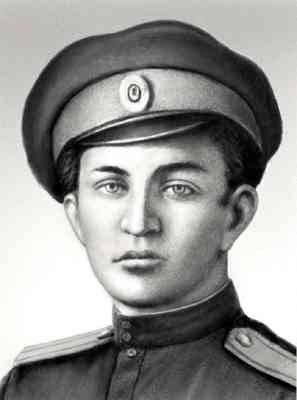
Evgraf Nikolaevich Kruten. The first Russian ace
Among the first generation of Russian pilots, one of the most prominent was Evgraf Nikolayevich Kruten. He can rightly be called the successor of P.N. Nesterov, the founder of aerobatics.
E.N. Kruten was born in Kiev 29 December 1890 of the year. After graduating from the Kiev Cadet Corps, and then Konstantinoveke artillery school, 23-year-old Second Lieutenant Kruten at his request was seconded to the 3-th aviation company in Kiev, where he was trained as an observer pilot. After graduating from the Gatchina Aviation School, he distinguished himself in air battles against the Germans during the First World War.
Kruten began with intelligence and bombing, and then became one of the first fighter pilots. In the spring of 1916, Russian fighter aviation units were formed as part of Russian aviation, and then front-line fighter aviation groups. Krutnya was appointed the commander of one of such detachments, and then the commander of the aviation group.
Air Group E.N. Kruntya
A talented and fearless pilot in a short period of time only over the location of his troops shot down 6 enemy aircraft. He destroyed several enemy planes while flying over the front line. In a battle that took place on 26 in May on 1917, Kruten shot down two enemy aircraft, which was extremely rare at that time.
Entering into battle, Kruten swiftly attacked the enemy and shot him from a short distance. Ancestor of air combat on verticals, Kruten put forward the idea of the combat order of a pair of fighters and developed other methods of air combat. He stressed that the basis of success in air combat is the suddenness of the attack, the advantage in height and speed, decisive maneuver, caution, opening fire with the smallest distance, the desire to destroy the enemy. In total, during the war, E.N. Kruten personally shot down the enemy's 15 aircraft.
Unsurpassed in the early years of world war, the master of air combat, Kruten was also the author of the first works on air combat tactics. His works “Creating Fighter Groups in Russia”, “Air Combat”, “Type of Fighter Apparatus” and others were very popular among aviators. He developed more 20 attack methods in aerial combat. Kruten pointed out that a large horizontal and vertical speed, maneuverability and advantages in altitude are necessary for a fighter aircraft to succeed in air combat.
Kruten spent the winter of 1916-1917 in France and England, where he was sent “to perfect the flying art”. In fact, it turned out that the Russian pilot himself taught the French and the British the skill of air combat. Stay on this trip E.N. Kruten described in the books "Military Aviation in France" and "What was thought in London."
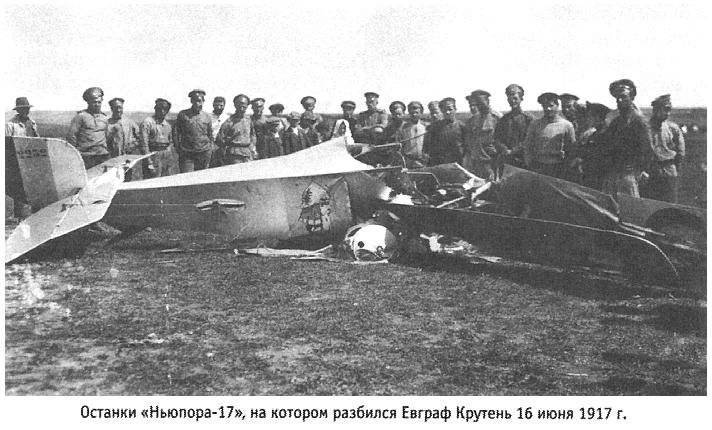
Kruten died tragically in the 27 year of life. This happened on June 7 of 1917, when his engine failed to return from combat flight. In the order for the troops of the South-Western Front, the deceased pilot was named one of the “most valiant and courageous”. In his flight activities E.N. Kruten carried out many of the plans of P.N. Nesterova to conduct air combat.
Sources:
Douz PD History aeronautics and aviation in Russia. July 1914 of the year - October 1917 of the year / Duz PD - M .: Mashinostroenie, 1989. - 368 with. - C.209.
Keldysh M.V. Aviation in Russia. Reference edition. / Keldysh M.V., Svishchev G.P., Khristianovich S.A. - M .: Mashinostroenie, 1988. - S. 320-322.
Rybalko V.V. The first exploits. The first air battles. / Rybalko V.V., Shishov L.M. // Wings of the Motherland: Sat. articles. - M .: DOSAAF USSR, 1983. - C.27, 28, 37.
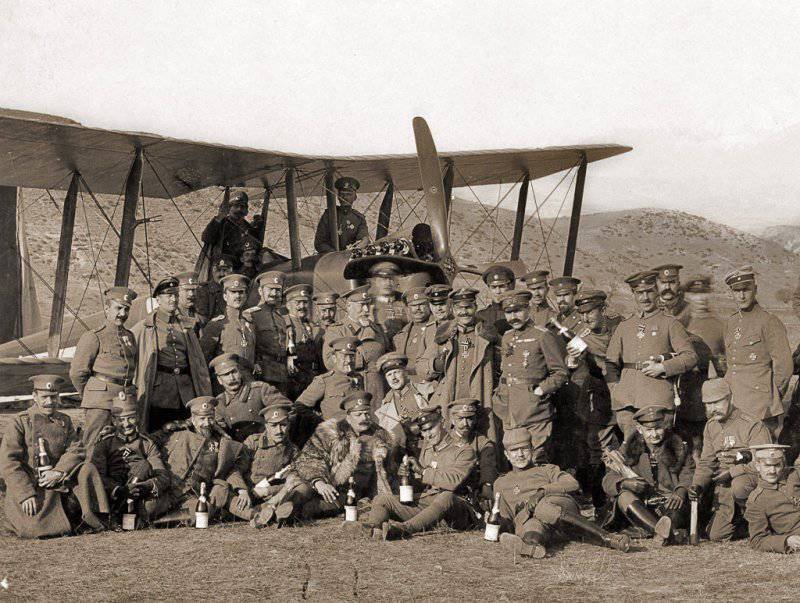
Information